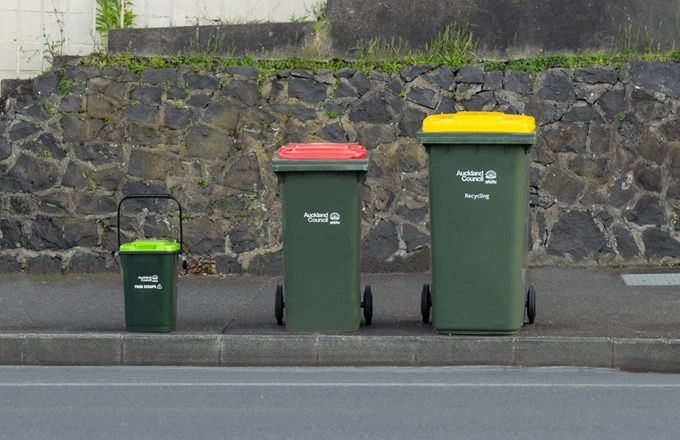From mid-October, Manukau residents can start using Auckland Council’s rukenga kai (food scraps) collections service.
Over the past month, nearly 100,000 food scraps bins have been delivered to residents in South Auckland.
Many Papakura residents are familiar with separating their food scraps for kerbside collection having a service since 2018. Now the rest of South Auckland will have their chance to divert food scraps from landfill.
Manukau Ward Councillor Alf Filipaina says the food scraps collection service is an important step in providing a sustainable future for our communities.
“From an environmental perspective, I’m proud of the contribution our communities will be making by diverting food scraps from landfill and putting them into the food scraps bin. The food scraps will be used for renewable energy and liquid fertiliser ensuring a better and healthier future for our children.”
Food waste in landfill is recognised as a global contributor to climate change. In landfill, it produces methane which is a greenhouse gas much more potent than carbon dioxide. It is estimated that diverting food scraps from landfill will save more than 21,000 tonnes of carbon dioxide equivalent every year.
Each household will receive a kerbside bin, a kitchen caddy that stays indoors, compostable bin liners and an information booklet. Translations of the booklet into other languages are available on the Auckland Council website. Language translations include te reo Māori, Samoan, Tongan, Chinese, Hindi and Korean.
The food scraps bins will be collected kerbside weekly along with residents’ weekly council rubbish collection.
Once collected, food scraps from all over Auckland are taken to a central facility in Papakura for initial inspection and consolidation. The food scraps are transported by truck to the Reporoa Organics Processing Facility in the central North Island where they are converted into renewable energy and liquid fertiliser.
For the journey to Reporoa, the food scraps are loaded into trucks that have hauled construction material from the Waikato to Auckland. These trucks would otherwise be going back to the Waikato empty, so the collection does not result in additional trips.
Using anaerobic digestion technology, the food scraps are broken down into renewable energy and liquid fertiliser. Renewable energy in Auckland’s case is used to grow tomatoes in glasshouses next to the Reporoa facility, while the fertiliser is spread on neighbouring dairy farms.
Kī ana te rukenga kai i ngā taiora, mā tātou e huri hei rauemi.
Food scraps are full of nutrients, let’s turn them into a resource.
For more information about the food scraps collection visit www.aucklandcouncil.govt.nz/foodscraps


